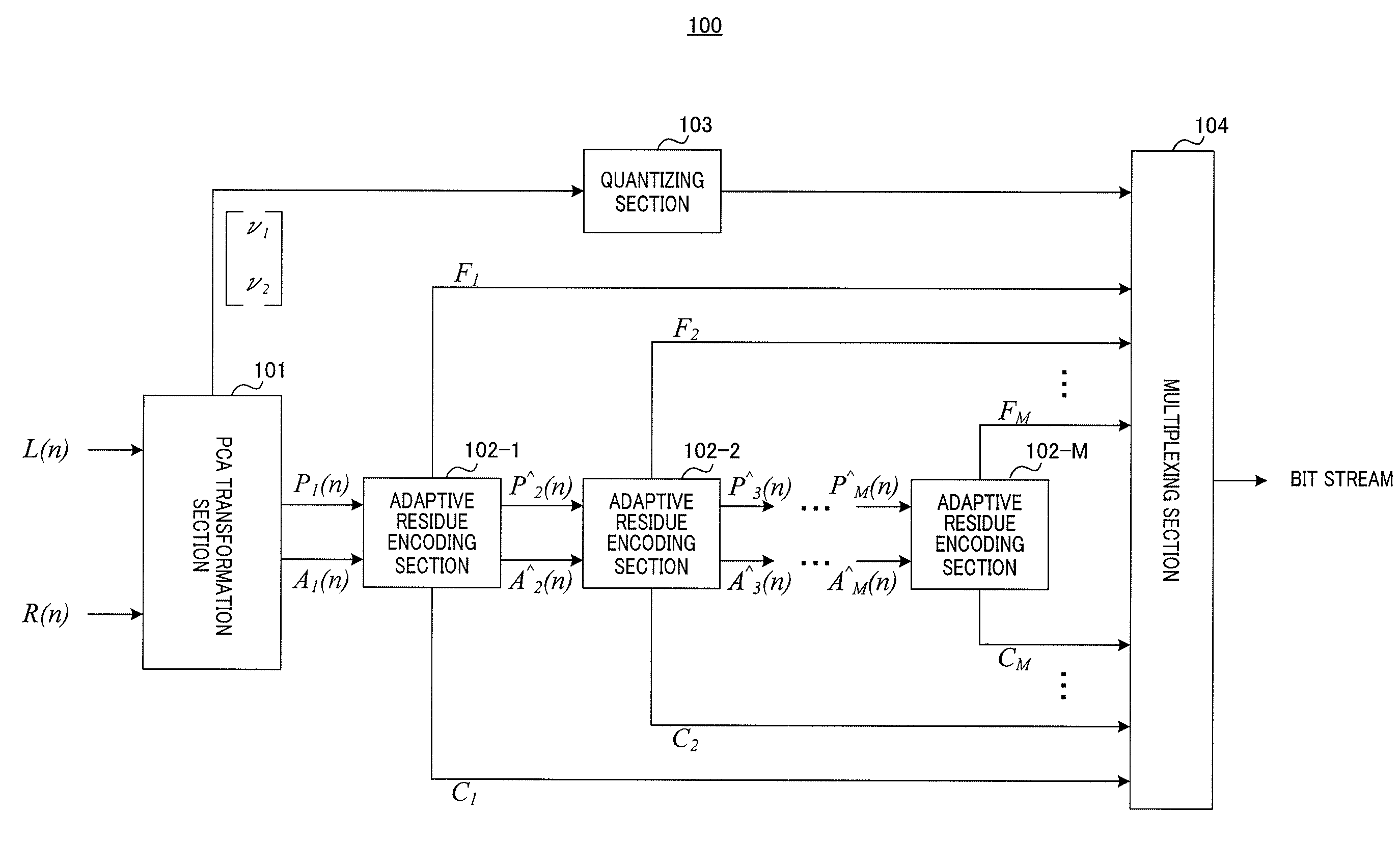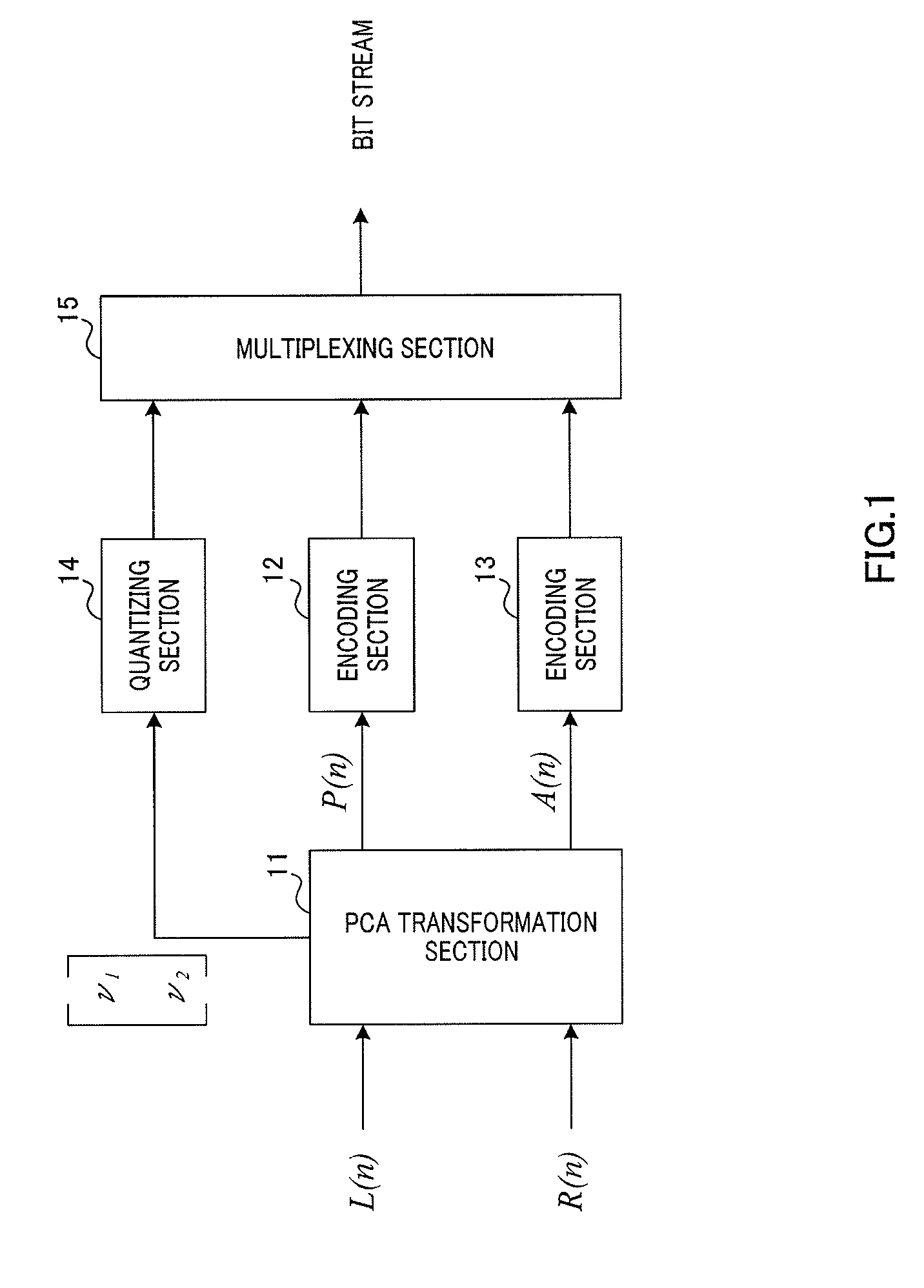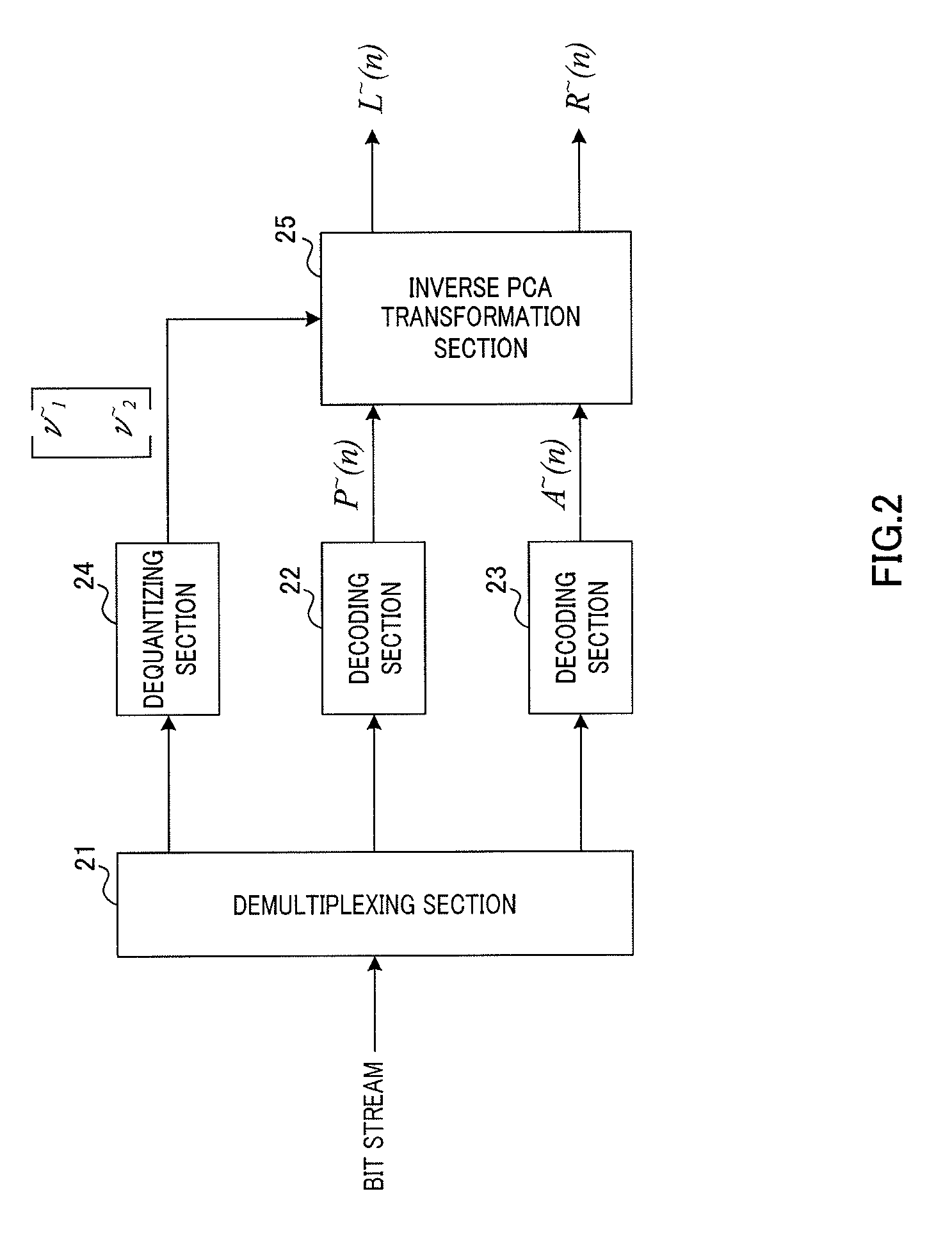Encoder, decoder, and the methods therefor
a decoder and encoder technology, applied in the field of encoders, decoders, encoders, encoding and decoding methods, can solve the problems of high difficulty in encoding both primary signals and secondary signals, and achieve the effect of reducing the amount of bit allocation information and high quality
- Summary
- Abstract
- Description
- Claims
- Application Information
AI Technical Summary
Benefits of technology
Problems solved by technology
Method used
Image
Examples
embodiment 1
[0039]FIG. 3 is a block diagram showing the configuration of an encoding apparatus according to the present embodiment, and FIG. 7 is a block diagram showing the configuration of a decoding apparatus according to the present embodiment. As an example, a scalable configuration of M layers will be explained as the configurations of the encoding apparatus and decoding apparatus according to the present embodiment. That is, in the following explanation, assume that the number of coding layers is M (M is a natural number equal to or greater than 2) in scalable coding processing. In encoding apparatus 100 shown in FIG. 3, adaptive residue encoding sections 102-1 to 102-M support the first layer to the M-th layer, respectively. Similarly, in decoding apparatus 200 shown in FIG. 7, decoding sections 202-1 to 202-M support the first layer to the M-th layer, respectively. Also, in the following explanation, the left signal and the right signal of a stereo signal are divided every NB samples (...
embodiment 2
[0072]Although adaptive residue coding processing is applied to the primary signal and the secondary signal in the first layer of the lowest layer in Embodiment 1, with the present embodiment, band division coding processing is applied to the primary signal in the first layer for further dividing the first layer into layers and performing coding in division frequency band units.
[0073]As a method of scalable coding in division frequency band units, studies are underway on, for example, a method of realizing scalable coding by dividing an input signal into a plurality of bands and performing coding in divided band signal units (e.g. see US Patent Application Publication No. 2008 / 004883, specification), and a method of realizing scalable coding by performing coding in subband units on MDCT coefficients in coding after layer 4 of ITU-T recommendation G.729.1 (i.e. TDAC (Time-Domain Aliasing Cancellation)), and transmitting encoded data preferentially from the subband of the highest ener...
PUM
 Login to View More
Login to View More Abstract
Description
Claims
Application Information
 Login to View More
Login to View More - Generate Ideas
- Intellectual Property
- Life Sciences
- Materials
- Tech Scout
- Unparalleled Data Quality
- Higher Quality Content
- 60% Fewer Hallucinations
Browse by: Latest US Patents, China's latest patents, Technical Efficacy Thesaurus, Application Domain, Technology Topic, Popular Technical Reports.
© 2025 PatSnap. All rights reserved.Legal|Privacy policy|Modern Slavery Act Transparency Statement|Sitemap|About US| Contact US: help@patsnap.com



